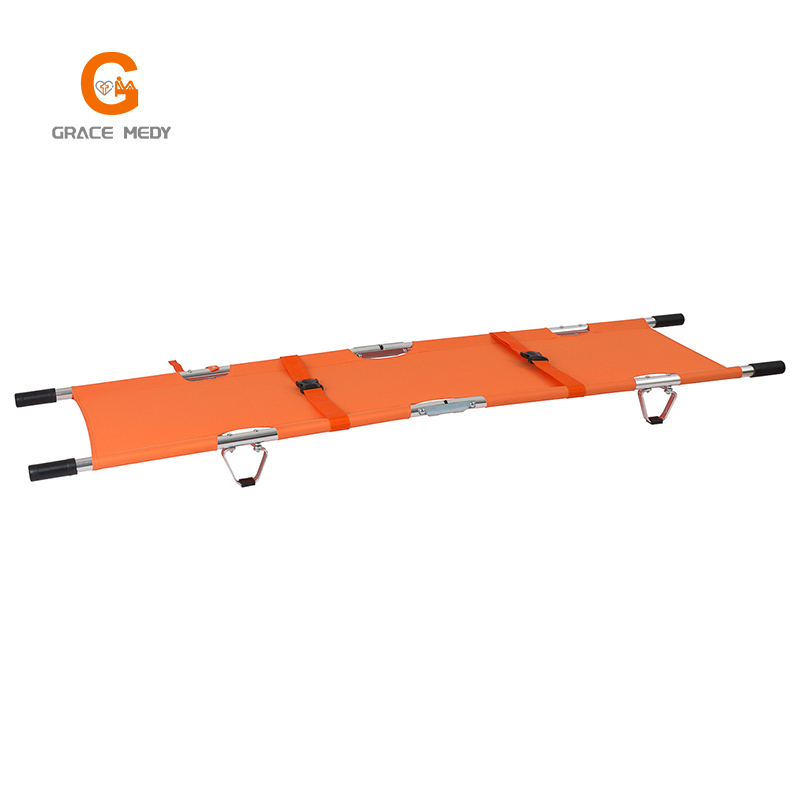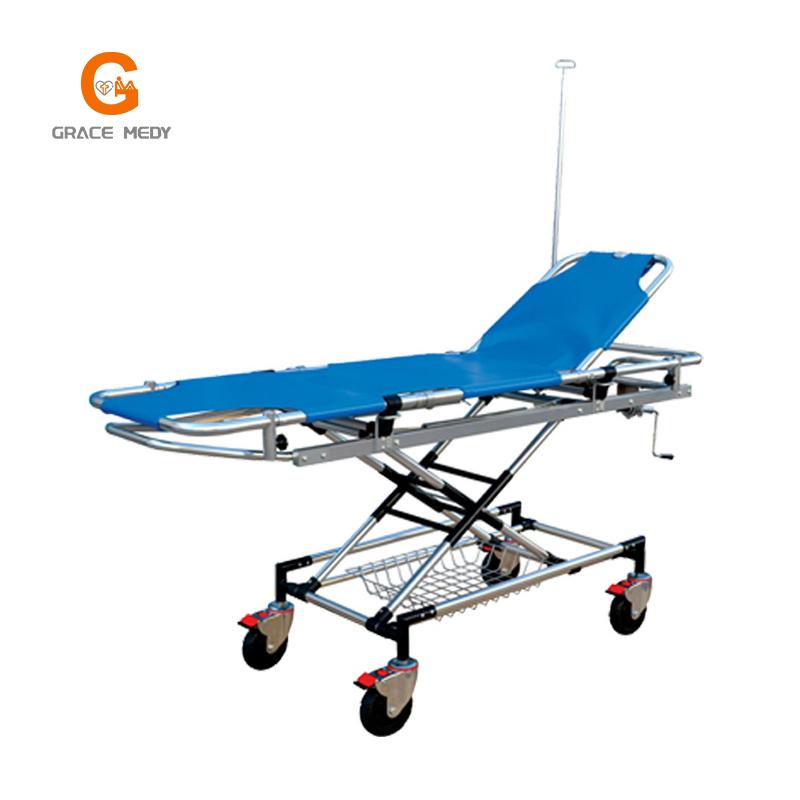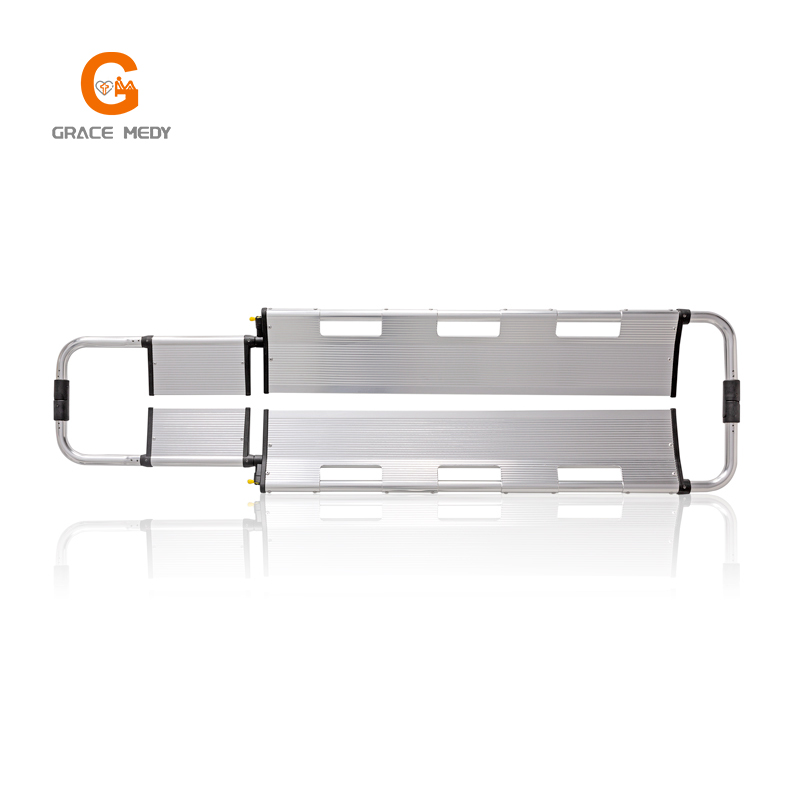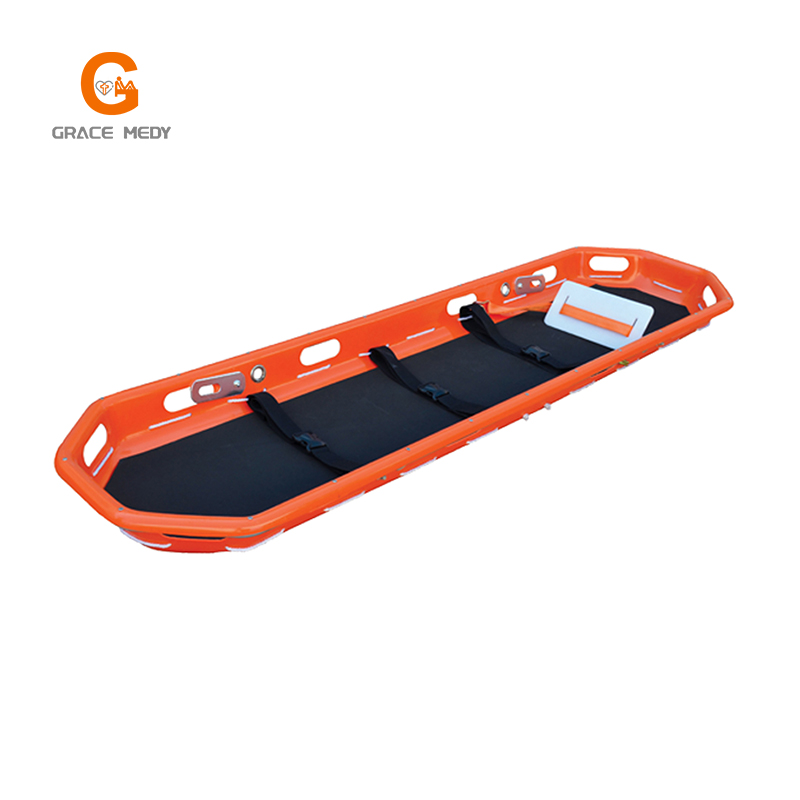Emergency rescue knowledge: classification and advantages of common stretchers
Stretcher is one of the common equipment in emergency rescue work. With the development of material science and the establishment of first aid and disaster medicine models, the materials of stretchers are constantly changing. Polyethylene fiber and polypropylene fiber stretcher surfaces and aluminum stretcher poles have appeared. According to the requirements of modern war wound treatment, various A variety of special stretchers have also come out one after another, and other types of stretchers have also developed competitively, forming a development situation with both unified standards and their own characteristics.
So, what are the more common stretchers at present? What are the characteristics of each? Let Guangzhou Yangyue briefly explain it to everyone.
1. Folding stretcher
This is a stretcher made of high-strength aluminum alloy material and Oxford leather surface. It has the characteristics of light weight, small size, easy to carry and safe to use. It is widely used in hospitals, sports venues, ambulances and military field transportation. sick and wounded.
2. Stretcher
The stretcher trolley is also called an ambulance stretcher trolley and an ambulance stretcher. It uses a negative pressure inflatable cushion-type fixed stretcher to carry the wounded with multiple fractures and spinal injuries. The biggest feature of this type of stretcher is that it can use the inflatable cushion to fix the whole body of the injured. When in use, the inflatable cushion can be inflated and flattened first, then the wounded can be placed on the air cushion, the air in the bag can be pumped out, and the air cushion can harden, and atthe same time the wounded can be firmly fixed in it, and can always be kept stable during transportation, without fall.
3. Scoop stretcher
This kind of stretcher is composed of left and right two pieces of aluminum alloy plates, which is convenient for transporting the wounded. The wounded can be placed in the supine position first, then the neck is fixed, and then the left and right pieces of the stretcher are inserted into the back from the side of the wounded and buckled. It can be transported after being combined.
4. Basket stretcher
Also known as “Stoke Basket”, it is divided into two types: aluminum alloy type and synthetic resin type. This type of stretcher is somewhat similar to a “boat”. When transporting the trapped persons, the trapped persons are placed in the ambulance stretcher car, and the “protruding” edge of the stretcher cooperates with the front sling to “enclose” the trapped persons inside the stretcher. In this way, the trapped person will not be separated from the stretcher due to the displacement of the stretcher (such as turning over and shaking).
Behind the security, there are also some hidden dangers. If the trapped person is too fat, and the sling tied on the front is too tight and the operation time is too long, it will easily cause chest tightness and suffocation of the trapped person. The North American firefighting community calls the situation of trapped people dying in the basket stretcher due to improper handling as “iron coffin” (the early basket stretchers were mostly aluminum alloy).
5. Roll stretcher
This is a multifunctional stretcher, which is somewhat similar to a basket stretcher in use, but is lighter in weight (approximately 8 to 12 kg), and can be rolled up in a roller or backpack for easy portability. Its production material is special synthetic resin, which has certain corrosion resistance, and its color is generally orange. Most of the roll-type stretchers in the mainland market are similar products imitating Japan and South Korea in Jiangsu and Zhejiang. In the North American firefighting community, the behavior of trapped people dying inside the roll stretcher due to improper operation of rescuers is called “shroud” (early roll stretchers were mostly made of high-strength canvas).
Post time: Aug-16-2023





